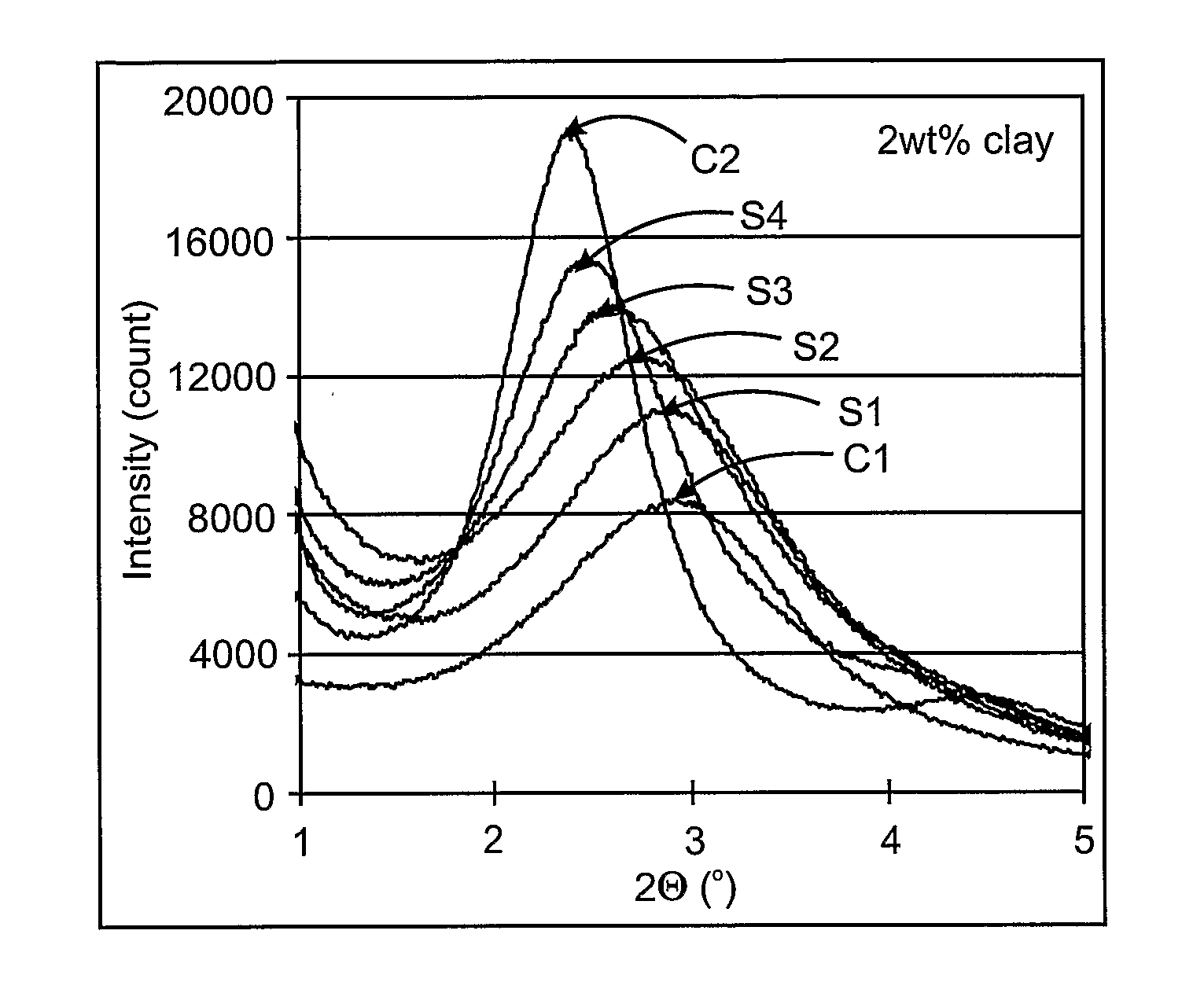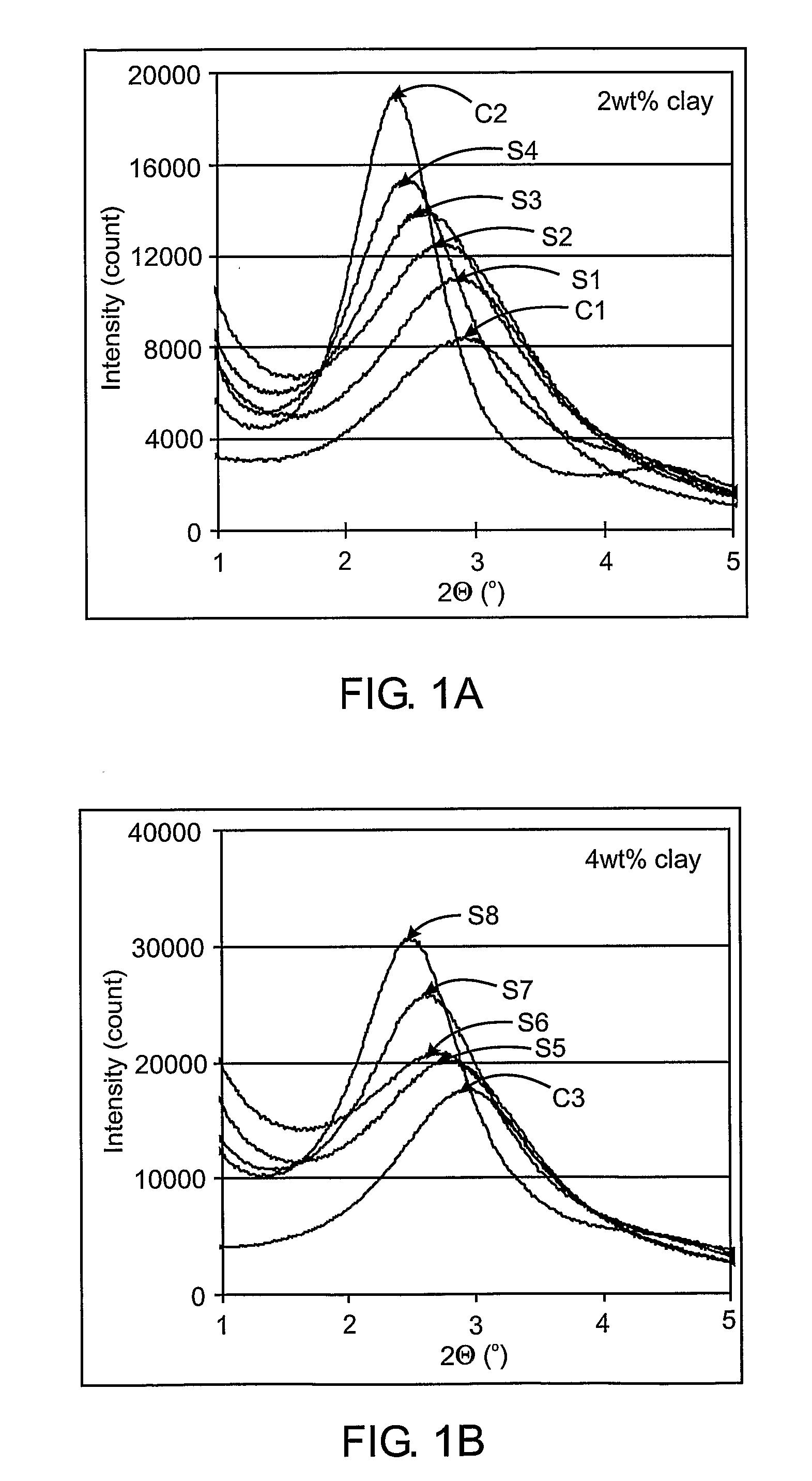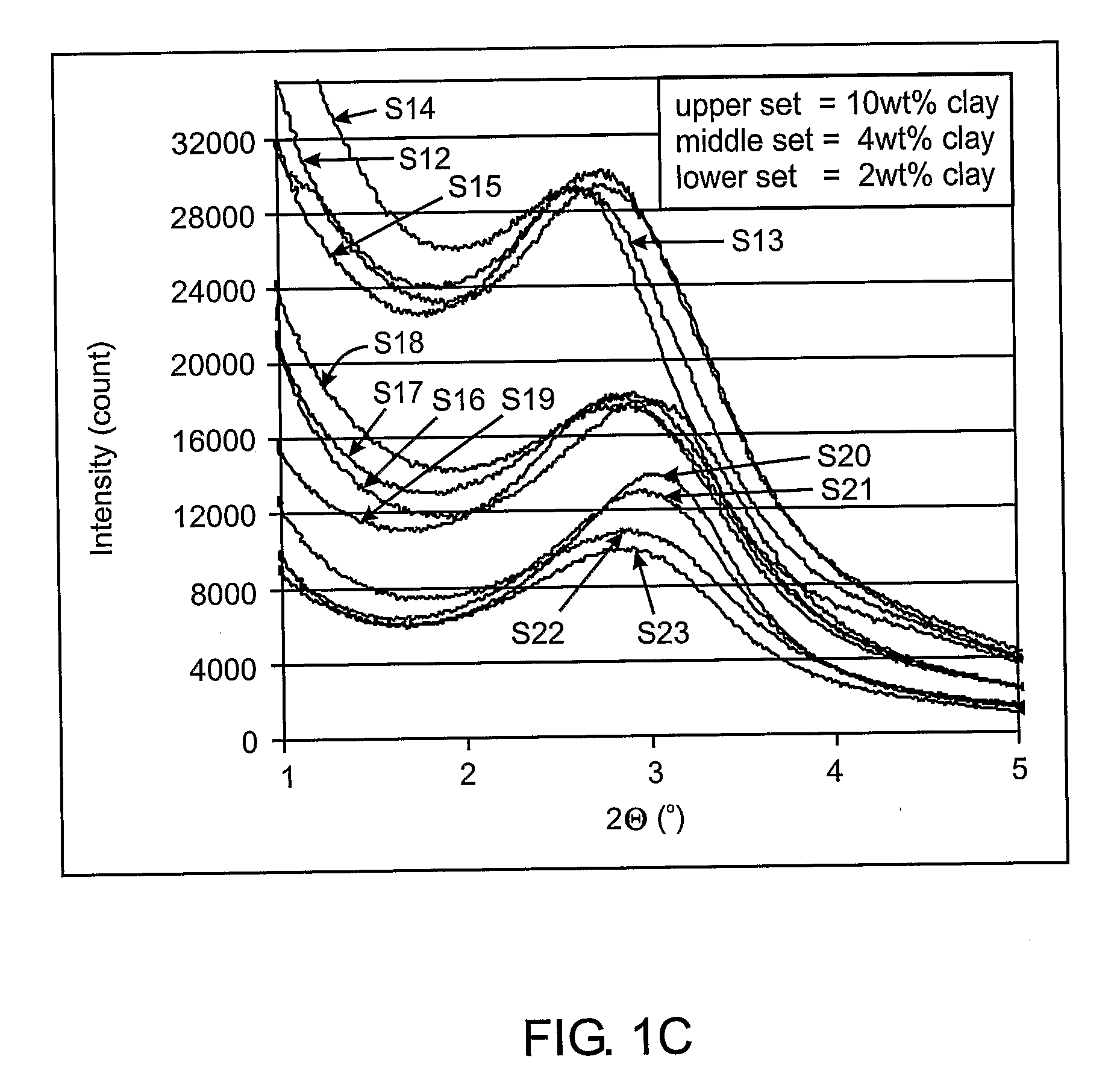Compatibilization of Polymer Clay Nanocomposites
a polymer clay and nanocompositivity technology, applied in nanotechnology, nanotechnology, material nanotechnology, etc., can solve the problems of poor dispersion of clay platelets in a polymer matrix, reducing the performance of nanocomposites, and the conventional approach of intercalating clays with alkyl ammonium compounds is less than satisfactory, so as to improve the matrix-clay interface, improve the mechanical properties and intercalation. , the effect of improving the functionality
- Summary
- Abstract
- Description
- Claims
- Application Information
AI Technical Summary
Benefits of technology
Problems solved by technology
Method used
Image
Examples
examples
Materials:
[0058]Materials used in the Examples are listed in Table 1.
TABLE 1MaterialSupplierTechnical InformationCloisite ™ 15ASouthernMontmorillonite clay (93 meq / 100 g)(clay)ClayOnium ion is 125 meq / 100 gProductsdimethylhydrogenated tallowGallery distance is 2.9 nmPro-fax ™ 1274BasellInjection grade polypropylene(polymer matrix)homopolymer(hPP1274)Mw ~300,000Dow 6D83KDowExtrusion and blow molding grade(polymer matrix)Chemicalethylene / propylene random copolymer(CPP6D83K)(4% ethylene)Mw ~360,000; Mw / Mn ~4MFI = 1.9 g / 10 minPolybond ™ 3150CromptonMaleic anhydride graft polypropylene(low functionality,0.5 wt % maleic anhydridelong chainMw = 330,000compatibilizer)(MA / PP = 1.6 mol / mol)(PB3150)Polybond ™ 3200CromptonMaleic anhydride graft polypropylene(high functionality,1.0 wt % maleic anhydrideshort chainMw = 84,000compatibilizer)(PB3200)Epolene ™ 3015EastmanMaleic anhydride graft polypropylene(high functionality,Chemicals1.31 wt % maleic anhydrideshort chainMw = 47,000compatibilizer)Ac...
PUM
| Property | Measurement | Unit |
|---|---|---|
| chain length | aaaaa | aaaaa |
| weight average molecular weight | aaaaa | aaaaa |
| total weight | aaaaa | aaaaa |
Abstract
Description
Claims
Application Information
 Login to View More
Login to View More - R&D
- Intellectual Property
- Life Sciences
- Materials
- Tech Scout
- Unparalleled Data Quality
- Higher Quality Content
- 60% Fewer Hallucinations
Browse by: Latest US Patents, China's latest patents, Technical Efficacy Thesaurus, Application Domain, Technology Topic, Popular Technical Reports.
© 2025 PatSnap. All rights reserved.Legal|Privacy policy|Modern Slavery Act Transparency Statement|Sitemap|About US| Contact US: help@patsnap.com



